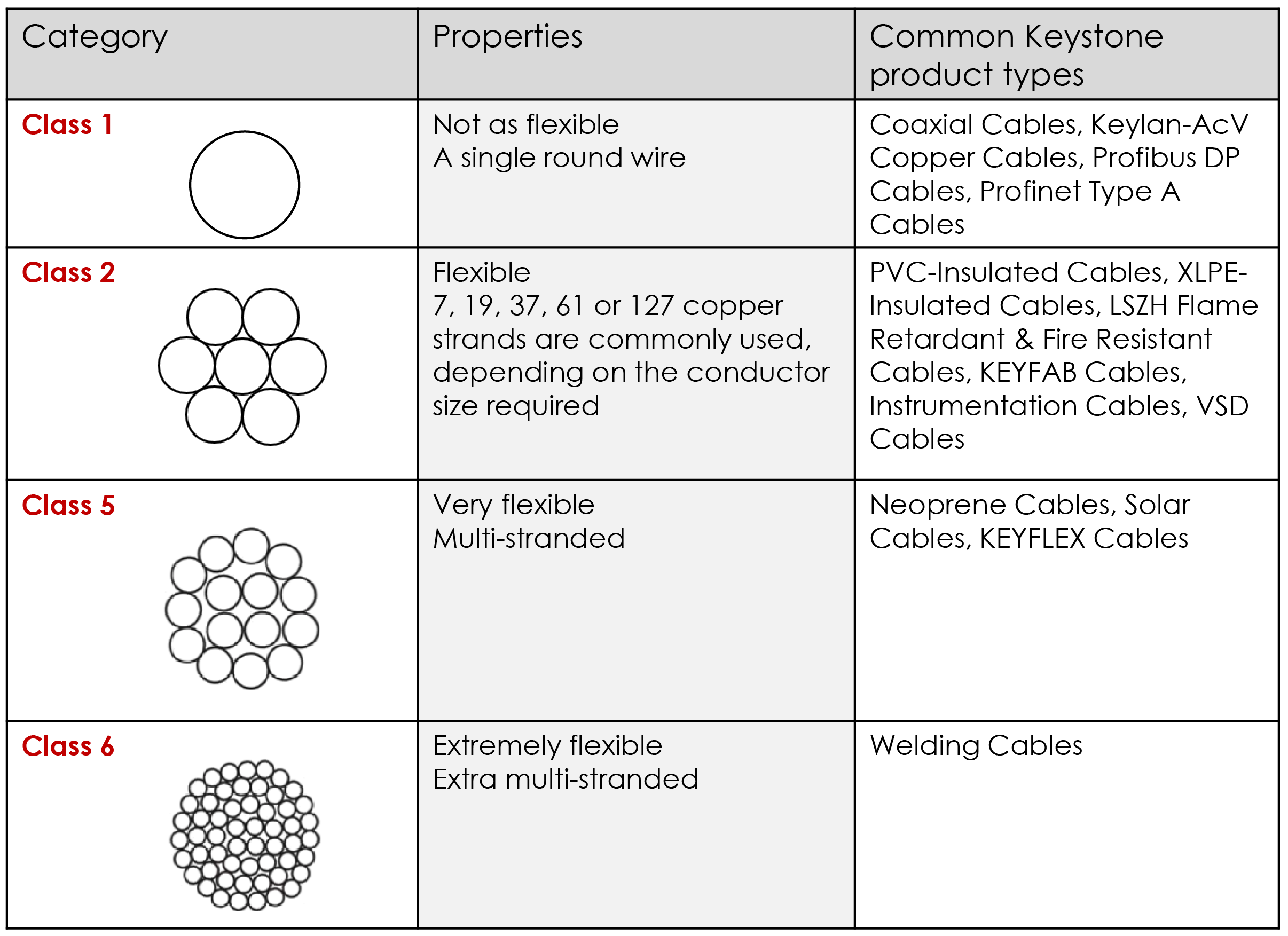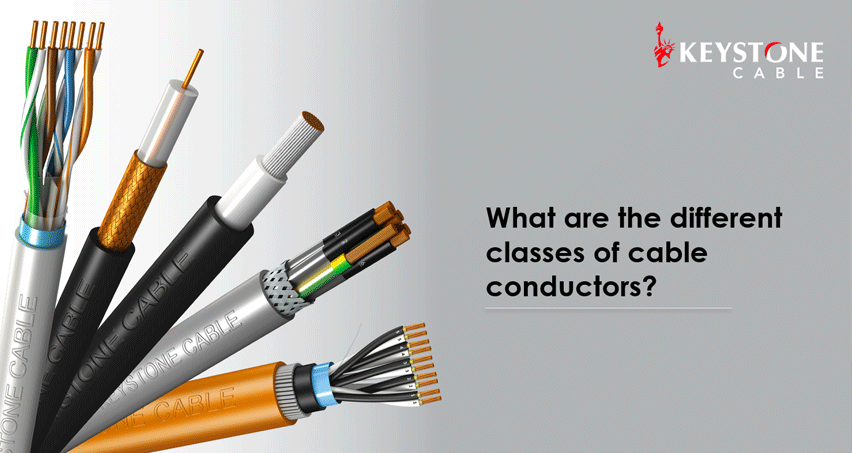A cable conductor is the primary component of electrical cables. It refers to the metallic wire or wires that carry the electrical signal through the cable.
Here, we examine the four different Copper (Cu) conductor categories: Class 1, Class 2, Class 5, and Class 6.
Why are there different categories?
The Cu conductors are grouped according to their flexibility; the higher the class, the more flexible it is. The flexibility of the Cu conductor of a cable will differ based on its unique purpose of use.
The simplest conductor is a single, solid wire (Class 1). Although it offers a smaller cable in terms of diameter, the largest Cross-Sectional Area (CSA), and the purest signal, it is mechanically weak and is prone to breakage after a few cycles of bending.
To improve flexibility, wires are stranded together. The more wires that are stranded together to make a given size, the more flexible the conductor will be. This implies that the higher the class, the more strands in the conductor. Furthermore, when wires are stranded together, they are much easier to bend and move during installation than a single wire with the same cross-section.
Those in classes 1 and 2 are intended for use in cables for fixed installations. On the other hand, those in classes 5 and 6 are designed for use in flexible cables and cords but may also be used for fixed installations.
The table below compares the different Cu conductors’ different categories.
Contact us if you would like to find out more about the cable types to choose for your cabling requirement.

